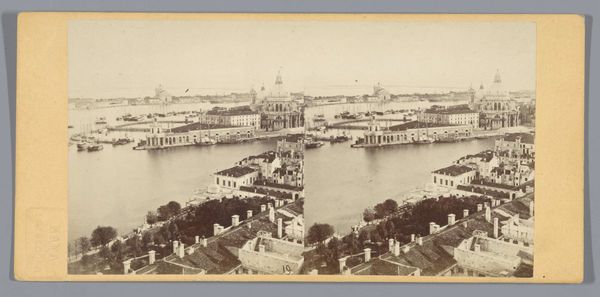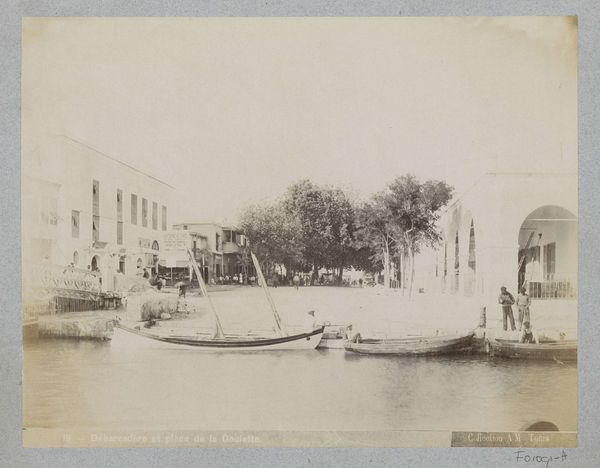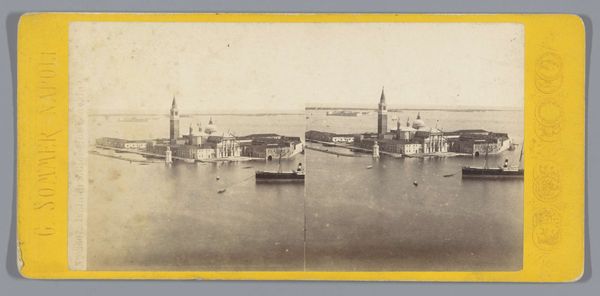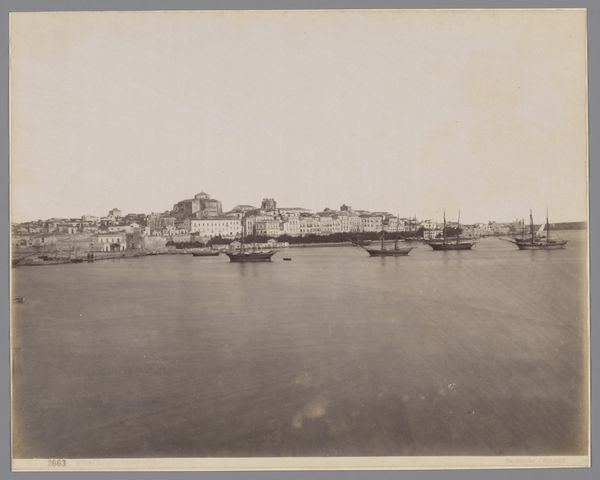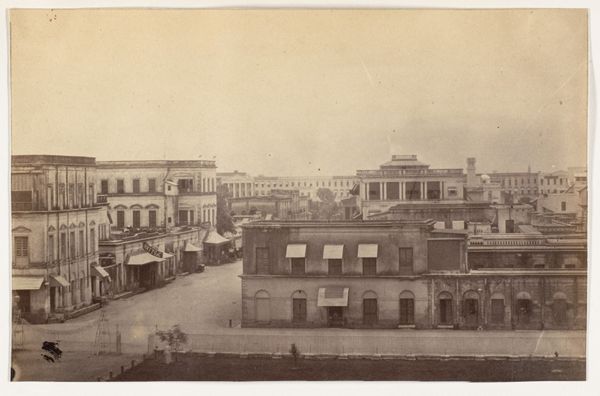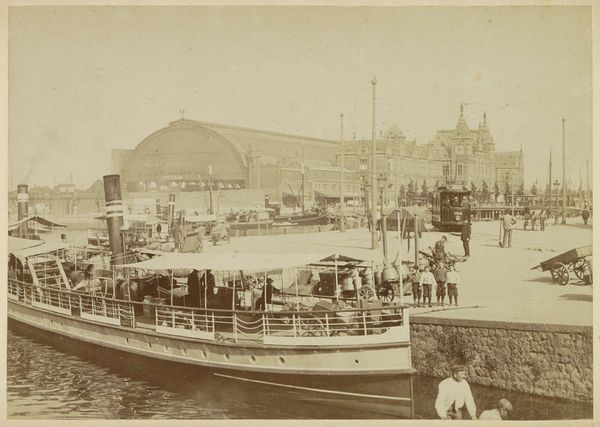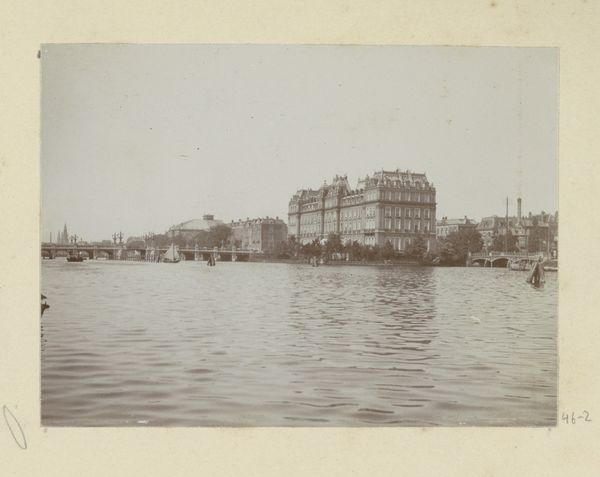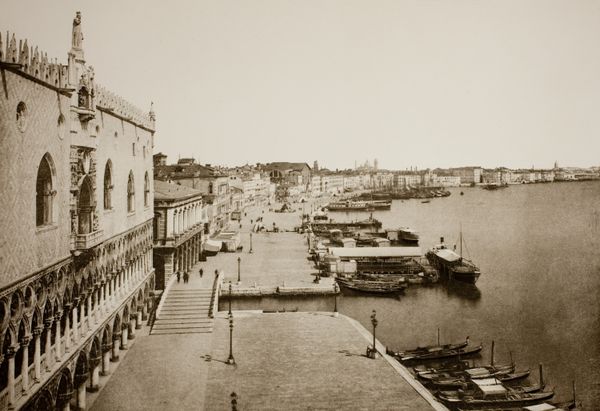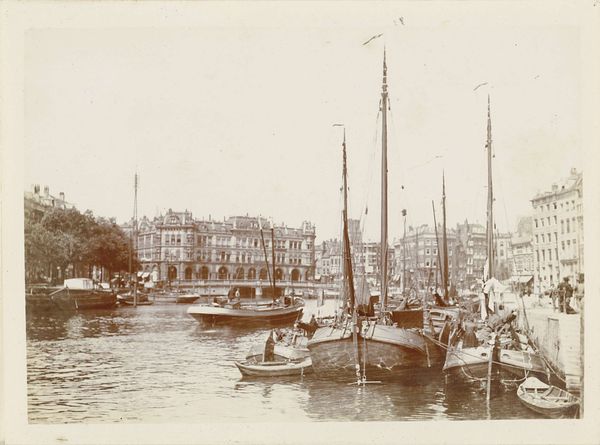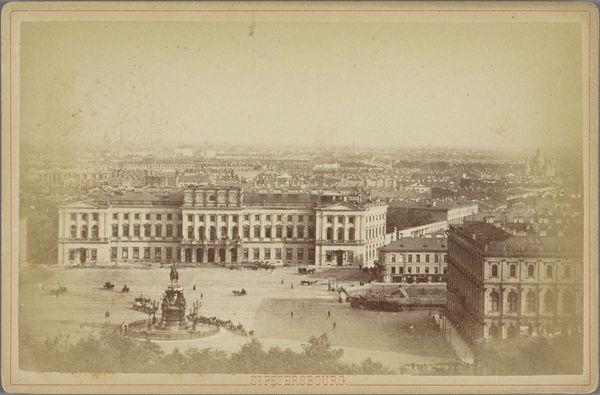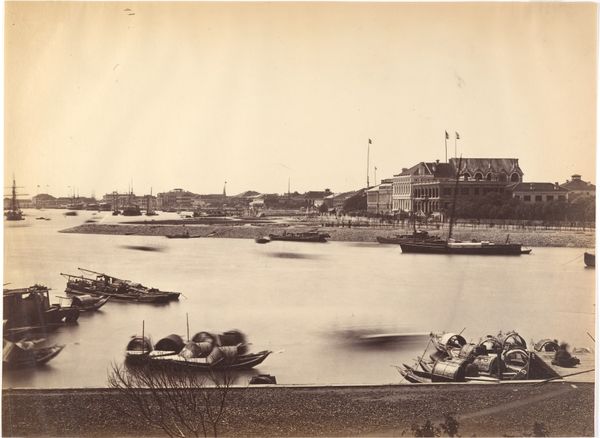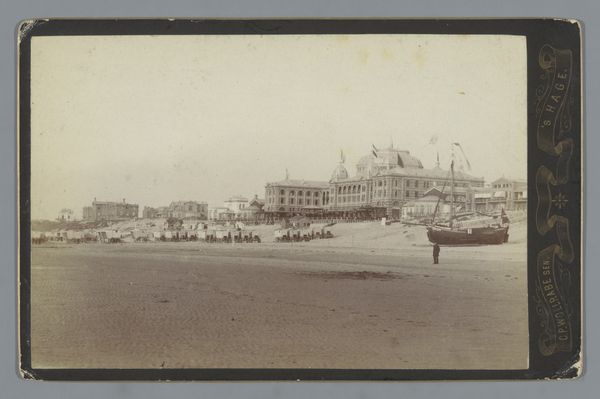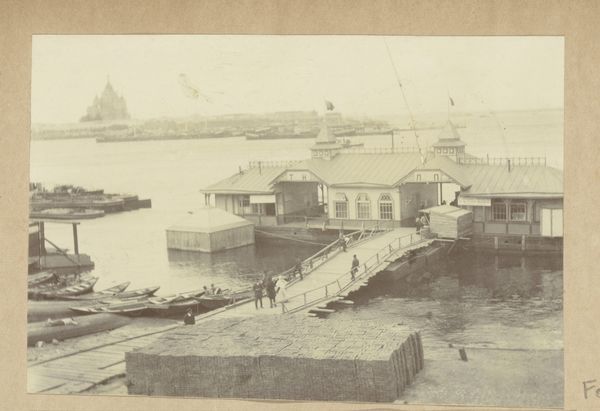
Gezicht op de Seinpost vanaf de Gevers Deynootweg in Scheveningen after 1886
0:00
0:00
andriesjager
Rijksmuseum
print, photography
# print
#
street-photography
#
photography
#
cityscape
Dimensions: height 50 mm, width 80 mm
Copyright: Rijks Museum: Open Domain
Curator: The sepia tones give this photograph a dreamlike quality, almost like a memory fading at the edges. There’s such a sense of quiet in "Gezicht op de Seinpost vanaf de Gevers Deynootweg in Scheveningen," taken sometime after 1886 by Andries Jager. Editor: It feels staged somehow. The stillness you mention makes it almost unsettling. Is it even real life, or some tableau constructed for the camera? The composition is unusual with that massive empty space, and people placed as decor. Curator: I can see why you'd say that. Early photography had certain limitations; subjects often needed to remain still for extended periods. That probably contributed to the lack of spontaneity that we associate with modern photography. However, beyond technical limitations, Jager appears keen on capturing the modernization of Scheveningen, depicting the transition from a fishing village to a resort town. The placement and repetition of buildings seems to evoke a controlled cityscape and the overall structure is of clear design and calculation. Editor: I see the modern buildings that are a testament to social and economical transition—there’s clearly some burgeoning tourism—but there’s an uncanny, isolating feeling too. Look at the figure seated near the stones, off to the left. They look alone and separated from the burgeoning landscape, as are the worker figures that load supplies on the dock at the base of the photograph. It looks both still and estranged. Curator: That tension is definitely there! It captures a pivotal moment. Andries Jager often documented the rapid urban development, infrastructure and daily lives, and by extension the class struggles that played out against the backdrop of these transitions. His choices highlight the social transformations occurring, maybe he saw the beauty in it or maybe a great disturbance of his natural environment. The empty space feels intentional, maybe even representing the blank slate of modernity being written onto the land. Editor: Maybe. Though personally, I still feel as if the artist missed his opportunity in framing a social revolution by focusing instead on his interest in lines. But at the end of the day, it makes you think, doesn’t it? That is after all, what we are looking to receive out of any art. Curator: Indeed. There is so much you can extrapolate, especially if you begin to consider the socio-economic implications and changes of the era! Editor: Definitely, Andries gives much food for thought when considering a moment in history and the ever changing landscape and human interaction with these places.
Comments
No comments
Be the first to comment and join the conversation on the ultimate creative platform.
